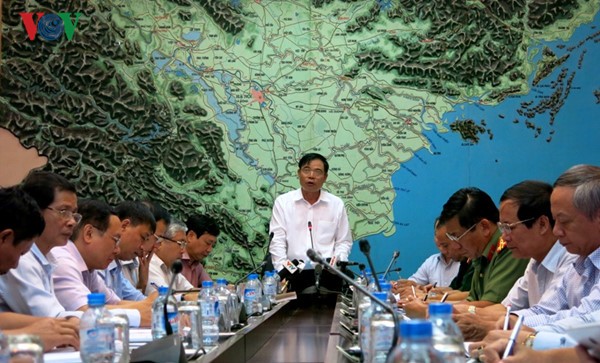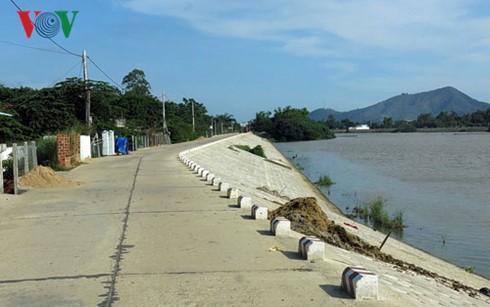(VOVworld) – As one of the countries most affected by climate change, Vietnam has proactively adapted to extreme weather phenomena, especially the climate’s influence on agricultural production. A number of solutions have been applied.
 |
| Officials discuss solutions to climate change. |
Agriculture is the core of the Vietnamese economy, contributing more than 18% of the GDP. It provides jobs for half of the labor force, who are mainly involved in small-scale household farm productions.
Climate change has had numerous effects but its most serious effects have been on agriculture, forestry, and fish breeding.
Adaptation to climate change
By the end of the 21st century, if the sea level rises 1m, Kien Giang and Hau Giang province will most likely be flooded, losing 81 and 77 percent of their land area respectively.
Half the area of Thai Binh, Nam Dinh, Soc Trang, Bac Lieu, and Ca Mau province could also be submerged.
16.8% area of the Red River Delta region will be submerged and 40% of the Mekong Delta, which is already prone to flooding.
Deputy Minister of Agriculture and Rural Development Le Quoc Doanh underscored the need to apply science and technology, renovate policies, and invest in infrastructure to improve farm production and the processing of farm produce. Doanh said it’s also necessary to expand production areas, boost productivity, and improve food safety for those fruits most in demand by importing countries.
Ho Xuan Hung, President of Vietnam Agriculture Federation, said: “The most important issue is the restructuring of crops. We have to accept the reality of climate change and adapt to it. For example, the recent saline intrusion was caused by both weather conditions and human factors. But if we could have made an earlier forecast, we could have restructured the crops and re-arranged production. The current strengths are husbandry, aquaculture, and cultivation of vegetables and fruits. We should also focus on the development of a forestry economy.”
 |
| Modernizing agricultural infrastructure in response to natural calamity, storms, flood, and climate change. |
To deal with climate change and drought sustainably, it’s essential to do master-planning for irrigation systems by region to regulate water resources so as to prevent saline intrusion and protect fresh water.
Nguyen Van Tam, Director of Kien Giang province’s Agriculture and Rural Development Department, said: “For the long-term, it’s necessary to pay more attention to capital sources for building irrigation systems which match the needs of each production region. And information systems should promptly warn of any threat of saline intrusion.”
Increasing adaptability at local level
Response to climate change has been adapted to each locale. Khanh Hoa province has prioritized the development of infrastructure for agricultural production, salt production, and aquaculture.
Binh Dinh has designed a response scenario in which adjustments are made to each sector’s development plan and the local socio-economic development program.
Nguyen Khanh Hoan, chief of Ben Tre’s Steering Committee for Natural Disaster Prevention and Search and Rescue, says the province has strengthened communications on the impacts of climate change to make local people more aware of their responsibility to protect forests and water resources and conserve water.
“It’s particularly important to conserve fresh water for personal use and production. We have increased mass media communications and gotten organizations, women’s associations, and youth unions involved in raising public awareness. People are storing fresh water and participating in efforts to mitigate natural disasters,” said Hoan.
In recent years, Vietnam has boosted its cooperation with the UN initiative to combine agricultural production and the national climate response program. The 3-year program will sort out inappropriate development policies and look for more effective measures.